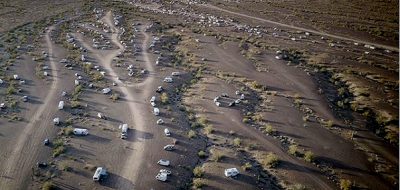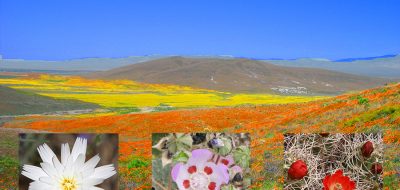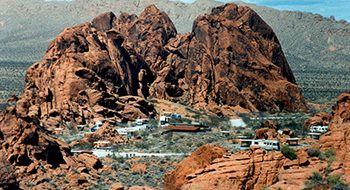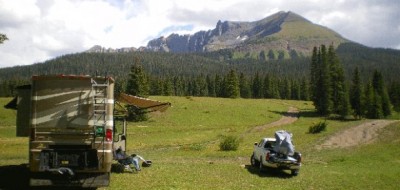
By Bob Difley
Where are the most popular winter get-aways for RV snowbirds? In a recent blog I wrote about Central Florida and the comments ranged from “Loud, crowded, dangerous, dirty, corrupt, over priced—–and that’s the good parts!” to “unbelievably ancient oaks and lovely cypresses, and, of course, the East Lake Tohopokaliga. if you can pronounce it, Come on down.”
So now, let’s look at a southwestern desert destination instead, and see what interesting and informative comments we get from those that go there. If you can’t take the humidity, don’t like the crowds flocking to Disney World, are not a fan of lush foliage and winter rain storms that are common to the Orlando area, try the Mojave and Sonora Deserts in Southeastern California and Southwestern Arizona for–what one of the Florida commenters wrote, “We spent one winter in Arizona.dust and darn near froze to death all winter. Thank god for warm Florida.”
RVers head south to the deserts mainly to leave behind the frigid and wet northern winters. Days in most of the low desert destinations will warm to the mid-50s even on the coolest days, while most of the winter rising into the middle and upper 60s and even warmer on both ends of winter. You will experience a few cold days with a cold wind and blowing dust, and snow sometimes will appear on the highest ridges.
But winter rains are generally light, soaking into the soil rather than running off, and don’t last long. Otherwise the deserts might have some of that lush foliage common to Central Florida. Those dangerous desert flash floods that you may have heard about happen mostly during summer thunder storms in areas with steep canyons. This is not usually a winter threat, which is evident at Craggy Wash (photo), a BLM camping area north of Lake Havasu City, Arizona that is popular with boondockers throughout the winter.
But another reason for heading to the deserts is that you can find just about any type of desert camping that you want on hundreds of thousands of acres of public lands managed by the BLM. You can choose locations with lots of friendly human neighbors, or with only coyotes, jack rabbits, and turkey vultures as your neighbors.
Your boondocking options include:
• Primitive, no hookup campgrounds. Sometimes a water fill station and trash dumpsters. Dump station nearby. No other amenities, other than possibly hiking and birdwatching and enjoyment of the desert landscape.
• Designated campground, un-designated campsites. Usually a large area of BLM land that has been allocated for boondock camping, sometimes called a Short Term Visitor Area (STVA), with no defined campsites or other amenities. Seldom a trash dumpster. Free but usually limited to two weeks camping, then requiring changing to a location at least 25 miles away. (Craggy Wash is an example.
• Long Term Visitor Areas (LTVA). These are areas designated by the BLM for long term or seasonal camping that are large sections of open land designated for boondocking. Most will have an onsite host, restrooms, trash dumpsters, a water fill station, and a dump station—if not onsite, nearby. There is a fee for camping.
• Dispersed or open desert camping. You can camp free anywhere on open BLM land, which is most of the desert, anywhere unless fenced off or prohibited by signs, which means you can head down any desert road until you find just the right campsite, whether it is on a plateau with a view to distant ridges, tucked away up a winding arroyo, or snuggled under a desert willow on the banks of a seasonal wash.
Dispersed camping is the purest form of desert boondocking, where you can choose a spot as solitary or communal as you wish. At Quartzsite, where most of the non-campground camping is in LTVAs you can find a spot among others near the entrance, or wander back gradually becoming less and less populated until you find just what you want. Groups or just a few rigs of friends can find and create their own encampments, circling the wagons, with a communal fire in the middle.
In other desert locations, anywhere you can find a dirt road that is not too soft or too lumpy you can explore for a campsite, or head for locally popular dispersed campgrounds where you will not be as isolated. Talk to other RVers, also, to find out where additional dispersed camping areas are, and keep your eyes open for small encampments of RVers gathered off the road.
Once you get used to the desert and perfect your boondocking skills, the deserts become wonderful places to explore, watch birds and wildlife, experience the spring wildflower blooms, rockhound, star gaze, take back country jeep or 4WD expeditions, accept the challenge of desert plant and cacti identification, and visit state parks and historic sites such as old mines and mining towns, ghost towns, abandoned ranches, and Native American sites.
Check out my website for more RVing tips and destinations and my ebooks, BOONDOCKING: Finding the Perfect Campsite on America’s Public Lands, Snowbird Guide to Boondocking in the Southwestern Deserts, and 111 Ways to Get the Biggest Bang out of your RV Lifestyle Dollar.





R. Mcintire
Liveing in southern, ca and southern AZ, I think its bad news to reccomend camping in any wash in the desert, while most storms may be short, some are big enough to create flash floods that will wash even a large rig down stream, last winter in Quartszite we had about 6-7 inches of water running through the camp and that was on level ground,not in a wash, just a word of caution.
Keith
Temperatures in the mid 50’s and maybe rising into the sixties. WOW that’s cold. If I wanted to be cold I’d stay up north. 82 here in central Florida yesterday . You can keep your cold desert I’ll take the warmth. To each his own. Happy Thanksgiving whereever you are.
George
What about crime? Is crime a well kept secret so as not to scare the tourists or is it “keep you valuables out of sight”, “don’t flash rolls of cash” (yeah like that’s a problem for me), “use common sense” (which isn’t always so common any more) and generally just behave cautiously? What about off the beaten path when boondocking? Are there any banditos lurking behind the cacti? Thanks for a response. My wife needs reassurance.
butterbean carpenter
Howdy Bob,
I always recommend ‘the Old Boondocker’ when anybody asks… I wish we had ‘boondocking’ in Texas, somewhere besides the East Texas forests.. That’s where the little mosquitoes from Louisiana hang out.. (the 2″ ones)
I’ll have to agree with the ‘stingy’ people who want to keep ALL of the desert to
themselves, tho… It is wonderful out there…but it is WONDERFUL in West Texas
too, also…especially here on my ranch in the middle of nowhere!!!!! On top of the
mesa where the sun goes to sleep!!!!!
W6PEA
“Anne Crawshaw on November 8th, 2010 5:41 pm
Please don’t send more people to my wonderful SW Deserts. They are incredibly beautiful, solar panels work wonderful to keep you charged (lots of sun) and the sunrises & sunsets are beyond belief!”
Sorry Bob but I have to agree with Anne !
The less people that discover our Southwestern Deserts the better !
Anne Crawshaw
Please don’t send more people to my wonderful SW Deserts. They are incredibly beautiful, solar panels work wonderful to keep you charged (lots of sun) and the sunrises & sunsets are beyond belief!
w6pea
Bob
You’ve done it again,another great article. Also where can you stay in Florida as cheap as you can in the Long Term Visitor Areas (LTVA), Been there done taht in Florida, thanks but no thanks.